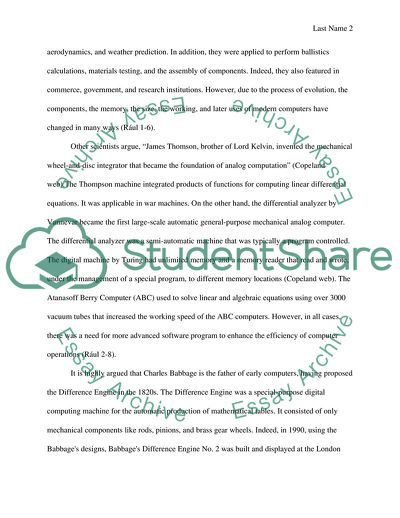Cite this document
(The History of the Computers Essay Example | Topics and Well Written Essays - 1250 words - 1, n.d.)
The History of the Computers Essay Example | Topics and Well Written Essays - 1250 words - 1. https://studentshare.org/technology/1773115-computerwho-invented-the-computer-how-did-early-computer-work-what-were-their-limitations-how-would-they-compare-with-computers-today
The History of the Computers Essay Example | Topics and Well Written Essays - 1250 words - 1. https://studentshare.org/technology/1773115-computerwho-invented-the-computer-how-did-early-computer-work-what-were-their-limitations-how-would-they-compare-with-computers-today
(The History of the Computers Essay Example | Topics and Well Written Essays - 1250 Words - 1)
The History of the Computers Essay Example | Topics and Well Written Essays - 1250 Words - 1. https://studentshare.org/technology/1773115-computerwho-invented-the-computer-how-did-early-computer-work-what-were-their-limitations-how-would-they-compare-with-computers-today.
The History of the Computers Essay Example | Topics and Well Written Essays - 1250 Words - 1. https://studentshare.org/technology/1773115-computerwho-invented-the-computer-how-did-early-computer-work-what-were-their-limitations-how-would-they-compare-with-computers-today.
“The History of the Computers Essay Example | Topics and Well Written Essays - 1250 Words - 1”. https://studentshare.org/technology/1773115-computerwho-invented-the-computer-how-did-early-computer-work-what-were-their-limitations-how-would-they-compare-with-computers-today.


